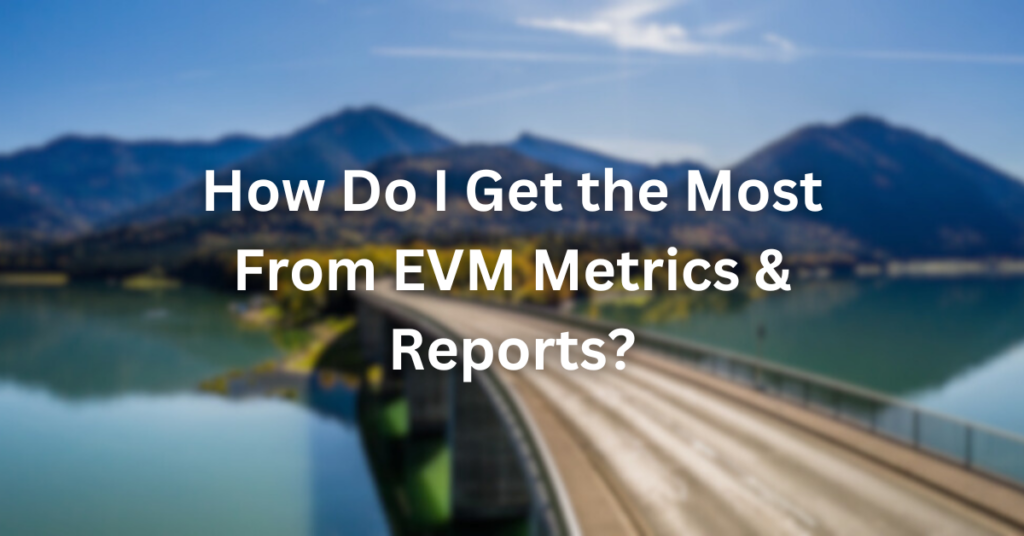How Do I Get the Most From EVM Metrics & Reports?

EVM collects data and computes metrics to help organize, track, manage, and analyze project performance and compliance. With DOD and DOE using an increasingly data-driven approach, project teams need to deal with literally over 100 metrics. This can be confusing and overwhelming—for government and contractors.
Project data tells a nuanced story about where the project is, where it came from, and where it’s going. The art of EVM lies in knowing where to look for that story in a sea of numbers, metrics, and reports. In this chapter, we’ll introduce some core concepts that we use at AzTech International to focus on the metrics that matter most.
HOW CAN YOU LEVERAGE EVM METRICS FOR PERFORMANCE-DRIVEN COMPLIANCE?
Here are some key ways use to use EVM data to optimize results:
- Performance-Driven Compliance. At AzTech, we use this concept by focusing on performance metrics that exceed thresholds or reveal outliers. This allows us to focus on the efforts with the most significant effect on project performance. These metrics help us identify which EVM project challenges to prioritize.
- Leading vs. Trailing Metrics. It is important to rank and prioritize metrics. For example, when a leading metric shows red or yellow, you know that a problem is coming and the project team needs to make an adjustment ASAP. When a trailing metric shows red, the problem is already here –it may be too late to mitigate.
- Composite Metrics. These correlate multiple EVM metrics to create a composite “score” that can offer a quicker and clearer understanding than a single metric.
- Data Integrity vs Data Quality. Borrowing from DOE experts, their Data Integrity & Quality (DIQ) checks help assure that contractor data is valid. DIQs are essentially a mix of compliance and data quality assessments. Less valid data equals less credible progress and forecast—and less effective management actions.
- Data-Driven Metrics. The DOD’s DCMA EVMS experts championed this now widely-used approach for compliance and surveillance. This looks at compliance versus performance metrics, automated versus manual metrics, and targeted artifact data traces to assess if an EVMS is producing reliable data that meets the 32 EVMS guidelines for managing technical, schedule, and cost performance.
WHAT ARE SOME METRICS TRAPS THAT GET EV TEAMS IN TROUBLE?
EVM teams commonly fall into the following traps when using and interpreting metrics:
- Taking Metrics Personally: Some metrics have a manager’s name attached to them. Address these with an attitude of “how can we help” rather than to chastise or appoint blame. Examples:
- Level of Effort (LOE) work will never have a schedule variance but can have a cost overrun or underrun. Naturally, LOE will not be on driving or critical paths just due to the nature of the work.
- Discrete work can and often does have schedule delays plus cost overruns or underruns: And the greater the technology challenges, the more likely this work will get hit with poor performance metrics.
- Neither work should be valued more or less than the other: The project needs well-managed LOE and it needs successful discrete work to complete the technically challenging project deliverables.
- Bottom line: Discrete work will more likely trip more performance and compliance metrics, but that – alone – should NOT reflect poorly on the managers.
- Trying to Outsmart the Metric: Project teams can fall into the trap of trying to beat the metrics without solving the problems they reveal. A classic example is to baseline work later than you truly plan to perform it, thereby looking ahead of schedule for some months. Another is to perform the “easier” work ahead of schedule when this masks the more important work that truly has greater priority or risk. Instead of ignoring or “cheating” the reason the metrics are there, try to see all EVM metrics as positive, even when they deliver negative feedback on the project. This ensures the honest use and reporting of metrics—as tools for learning and growth—for the overall benefit of the project to proactively mitigate issues and reduce risks.
Whether you’re a DOD or DOE agency or a contractor, navigating an EVM project doesn’t have to be stressful or intimidating. Download our free guide today! to demystify the process and provide the insights you need to achieve the outcome everyone in your organization expects.
Subscribe to our Newsletter:





